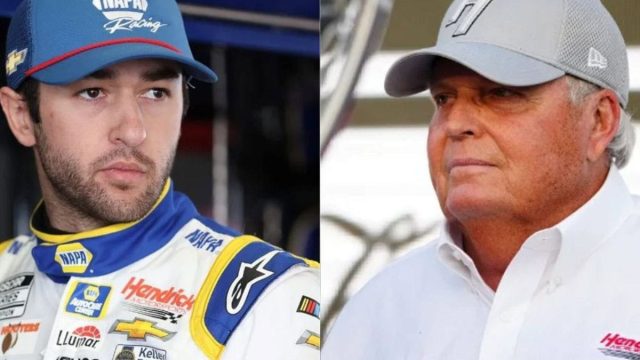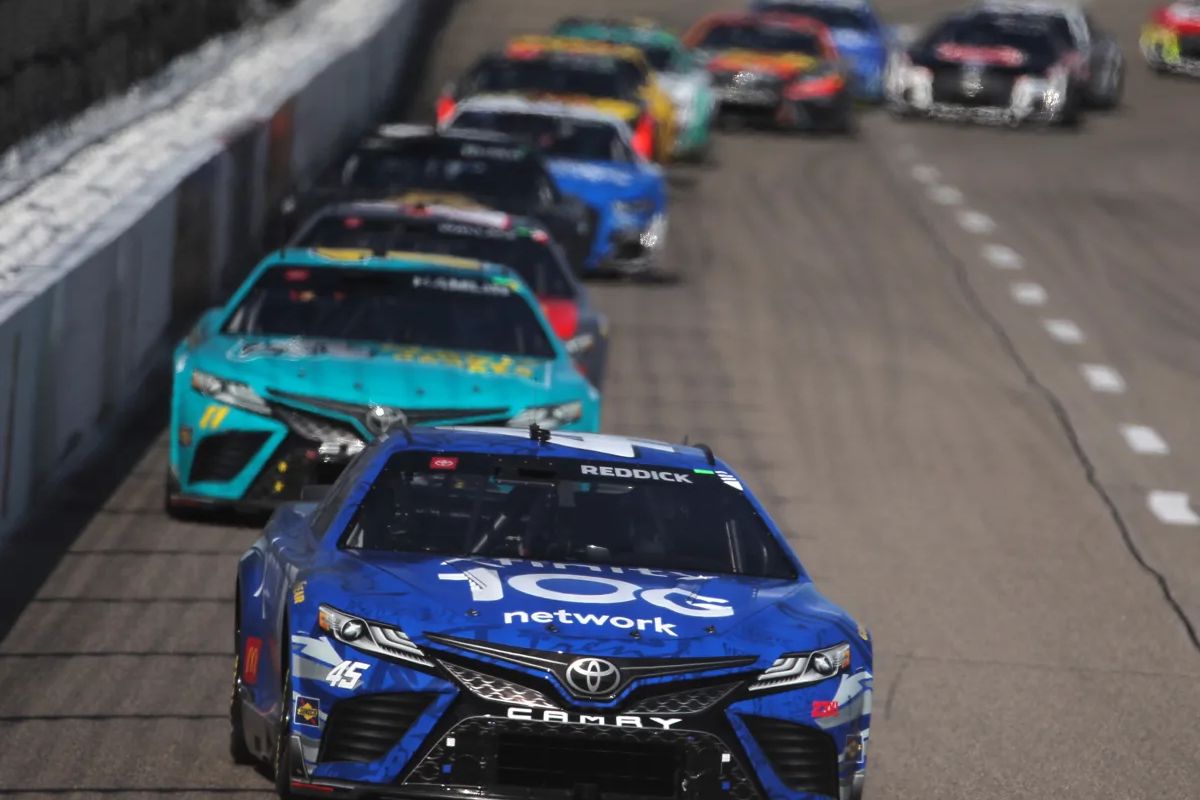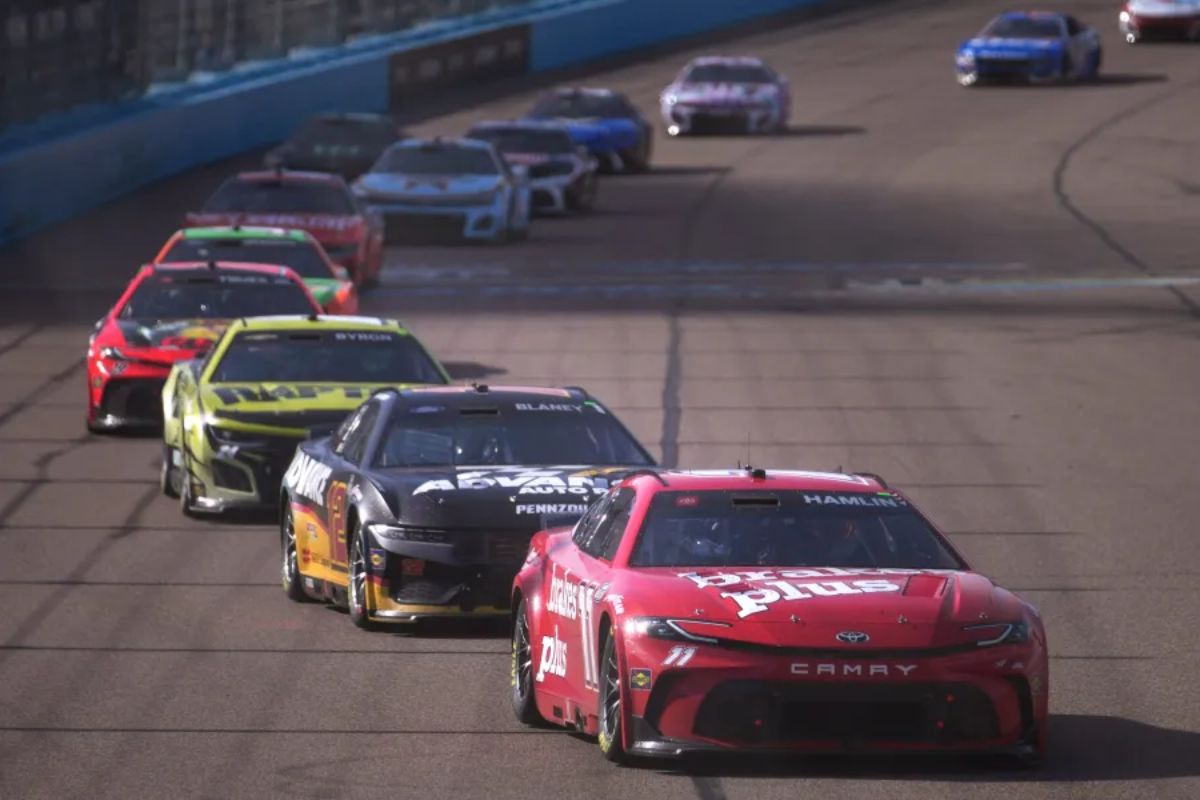Chase Elliott Dismisses Rick Hendrick Conflict Claims: Chase Elliott‘s recent dismissal of alleged conflicts with Rick Hendrick raises significant questions about team dynamics at Hendrick Motorsports, especially as the season reaches its climax. By asserting that ‘it’s not really changed,’ Elliott not only deflects speculation but also reinforces the notion of a cohesive team environment essential for high-stakes racing. This assertion prompts a deeper examination of the interplay between driver relationships and performance outcomes, particularly in consideration of the playoff standings and the rivalry with teammates like Kyle Larson. How will these dynamics influence their strategies in the upcoming pivotal races?
Key Highlights
- Chase Elliott has denied any conflict with team owner Rick Hendrick, asserting that team dynamics remain stable.
- He emphasized a focus on performance and results, rather than any rumored tensions.
- Elliott’s statements highlight the importance of effective communication within Hendrick Motorsports.
- He acknowledged the mutual respect developed through shared championship experiences with teammates.
Season Finale and Driver Rivalry
As the NASCAR season approaches its thrilling finale, the intensifying rivalry between leading drivers not only captivates fans but also raises questions about their legacies in the sport. With only four races left, the stakes escalate as two dominant contenders find themselves locked in a battle that could substantially alter their reputations and future trajectories within NASCAR.
Rivalries in motorsport often serve as both a catalyst for heightened performance and a source of tension. In this case, the proximity of the championship leads to a fierce competition where each driver is acutely aware of the implications of their performance. As they push their limits, the psychological aspects of rivalry come into play—strategies evolve, alliances are tested, and the impact of public opinion looms large.
The current situation is evocative of historical rivalries that have defined the sport. Remarkably, the outcomes of these final races not only determine the championship but also etch the names of these drivers into the annals of NASCAR history. Their ability to navigate the strains of competition, maintain composure under scrutiny, and deliver exceptional performances will certainly shape how they are viewed by fans and historians similarly.
Thus, as the season hurtles toward its finale, the narratives surrounding these rivalries grow richer, inviting both analysis and speculation. The question remains: who will emerge victorious, and how will this rivalry influence their legacies in a sport marked by its fierce competitiveness?
Chase Elliott on Teammate Dynamics
The intensifying rivalry among drivers raises pertinent questions about how teammates like Chase Elliott and Kyle Larson balance competition with collaboration in pursuit of the championship. As they approach the final races of the regular season, both drivers are acutely aware of the stakes involved. Competing for the same title within Hendrick Motorsports creates an intricate landscape where friendship and competition intersect.
Elliott, however, downplays any perceived tension between himself and Larson. He asserts that their dynamic remains unchanged despite the escalating demands of the playoffs. This perspective is vital; it highlights a professional maturity that underpins their relationship. In racing environment, the ability to maintain open lines of communication and strategy sharing is fundamental for maximizing their collective performance.
Moreover, Elliott emphasizes the importance of teamwork, even amidst personal ambition. He acknowledges their history of competing against each other for championships, suggesting that such experiences have fostered a mutual respect that transcends rivalry. By stressing a consistent approach each week, Elliott implies that their focus remains resolutely on the broader goals of the team, rather than individual accolades.
Team Dynamics and Communication
Effective team dynamics and communication are fundamental components that underpin the success of Hendrick Motorsports, enabling drivers like Chase Elliott and Kyle Larson to collaborate while fiercely competing for the championship. The interaction between teammates is characterized by a systematic approach that fosters transparency and cooperation, greatly enhancing their performance on the track.
“No, I mean, we have a system truthfully and we do that system every week and that has never changed. Kyle and I have raced for a couple championships against each other…we’ve been in that position and it’s not really changed.” – Elliott
Elliott emphasizes that their communication framework remains consistent, allowing them to share insights and strategies without compromising competitive integrity. This openness cultivates trust and empowers the drivers to adapt to the evolving demands of NASCAR. As they navigate the complexities of racing, the willingness to exchange critical information serves as a competitive advantage that distinguishes Hendrick Motorsports from its rivals.
Moreover, the adaptability of the team in embracing new technologies and regulatory changes highlights the importance of effective communication. By maintaining a collaborative environment, Hendrick Motorsports guarantees that all team members, from drivers to engineers, are aligned in their objectives and methodologies.
Playoff Standings and Driver Performance
Building on the strong team dynamics that propel Hendrick Motorsports, the current playoff standings highlight the intense rivalry between Chase Elliott and Kyle Larson, with Elliott maintaining a slender three-point advantage. This narrow margin emphasizes the stress both drivers feel as they vie for supremacy in the championship chase. Each race presents an opportunity not only to accumulate important points but also to outmaneuver one another, further intensifying their competitive spirits.
Elliott’s performance this season has been characterized by remarkable consistency. He has finished within the top 20 in every race, a demonstration of his ability to navigate the challenges of each event and secure crucial points. This reliability has proven fundamental in maintaining his position in the standings, allowing him to capitalize on Larson’s shortcomings during select races.
On the other hand, Larson’s expedition has been marked by a combination of strong performances and disappointing finishes. While he possesses the potential for exceptional speed and success, his inconsistent results have occasionally hindered his championship ambitions. As both drivers approach the critical stages of the playoffs, the contrasting styles of Elliott’s consistency and Larson’s fluctuating performance will be essential in determining the ultimate outcome.
As the competition heats up, fans are enthusiastic about how this rivalry will evolve, with every point becoming increasingly important as the playoffs progress. The outcome will hinge not just on raw talent but also on tactical decision-making and execution under stress.
Larson’s Achievements vs. Elliott’s Performance
While Chase Elliott‘s consistency has kept him in the running for the championship, Kyle Larson‘s three victories and impressive lap leadership position him as a formidable competitor with the potential to seize the title. Larson’s ability to secure victories—two more than Elliott this season—highlights a crucial edge in a championship scenario where winning is paramount. His dominance is further emphasized by leading an impressive 755 laps, demonstrating not only speed but also endurance and tactical insight throughout races.
Conversely, Elliott’s performance has been characterized by reliability rather than outright wins. His consistent finishes have earned him valuable points, keeping him competitive as the playoffs approach. However, that consistency, while commendable, is contrasted against Larson’s more aggressive approach that has yielded tangible results regarding victories and pole positions. Larson’s four pole positions accentuate his skill in qualifying, allowing him to start races from advantageous positions, which can greatly influence race outcomes.
As the regular season draws to a close, the dynamics between these two Hendrick Motorsports teammates reveal a classic rivalry. While Elliott’s steadfastness may prove to be an asset in the long run, Larson’s current form suggests that he is not only a contender but perhaps a favorite as the playoffs unfold.
News in Brief: Chase Elliott Dismisses Rick Hendrick Conflict Claims
Chase Elliott’s reaffirmation of positive relations with Rick Hendrick emphasizes the importance of stability within Hendrick Motorsports.
As the season approaches its climax, the focus on collaboration and effective communication becomes critical for maximizing performance.
The contrast between Elliott’s struggles and Kyle Larson’s achievements further highlights the necessity of a cohesive team dynamic.
Ultimately, maintaining a unified front will be vital for maneuvering the challenges of the playoffs and pursuing competitive success.
ALSO READ: Chase Elliott Dismisses Selfish Tactics in Kyle Larson Battle: ‘That Has Never Changed’



